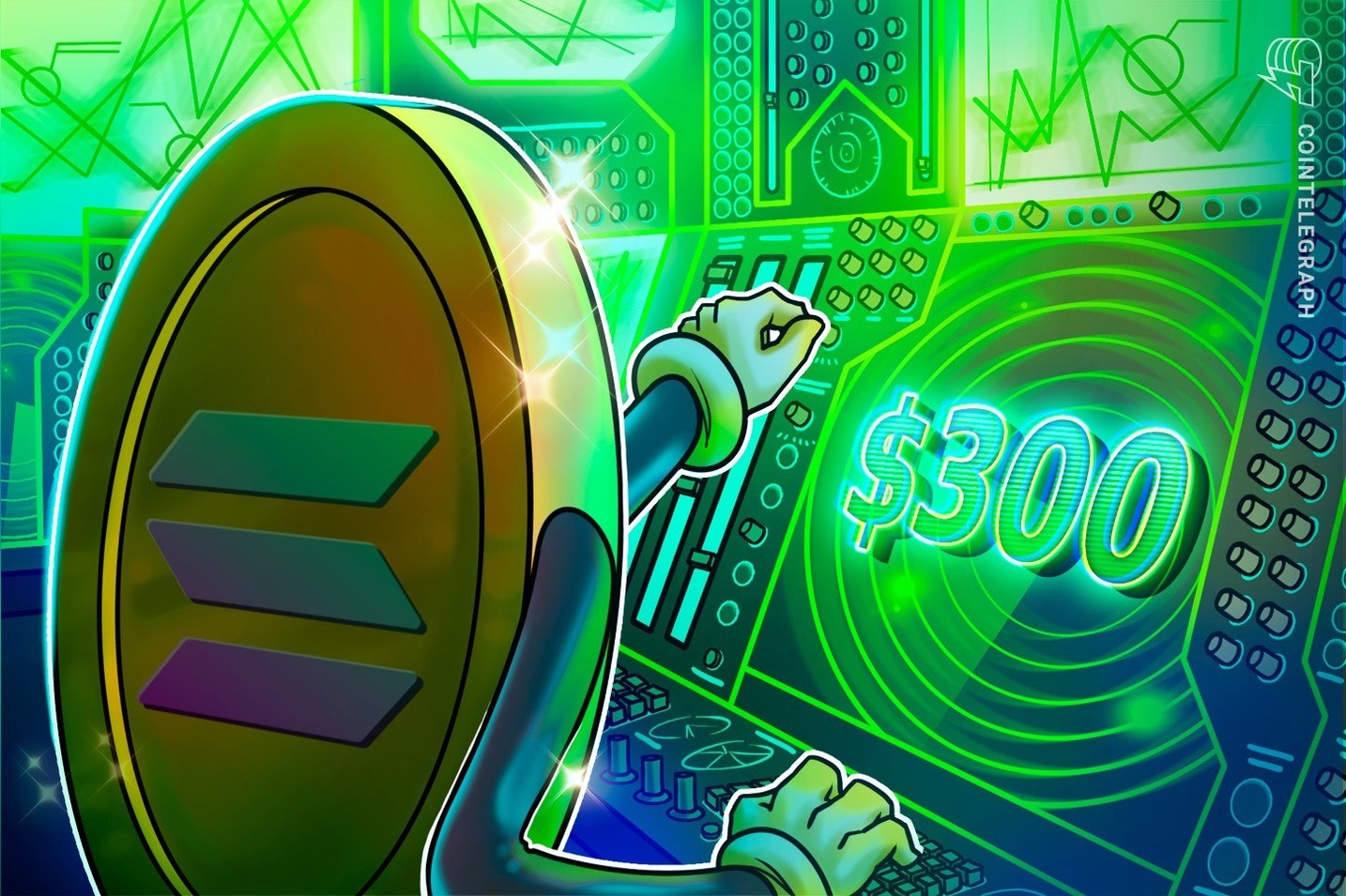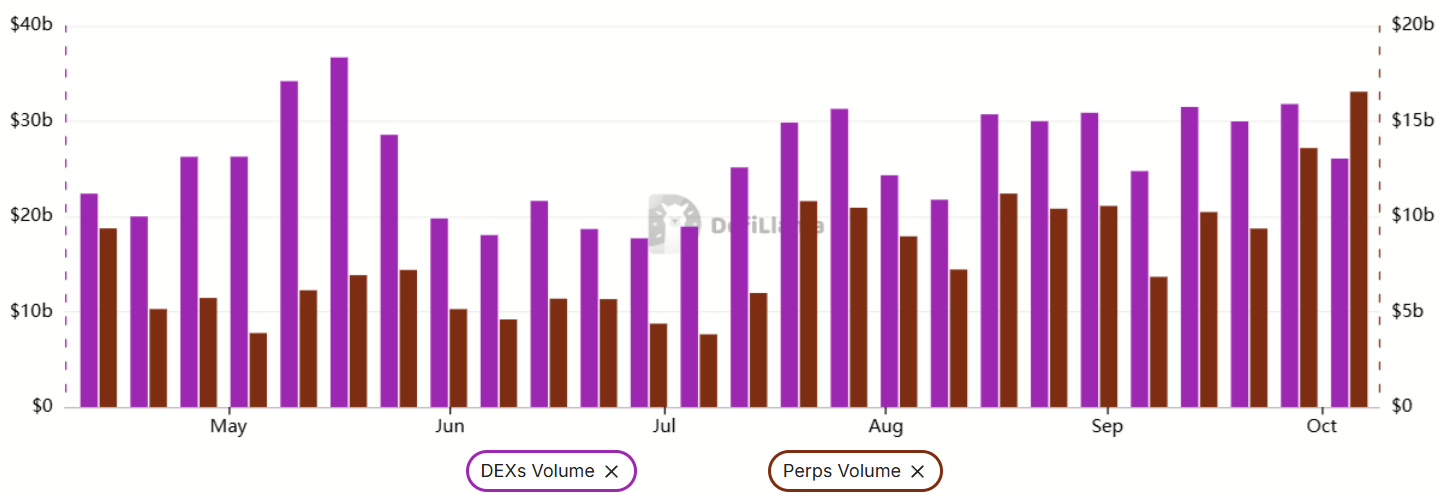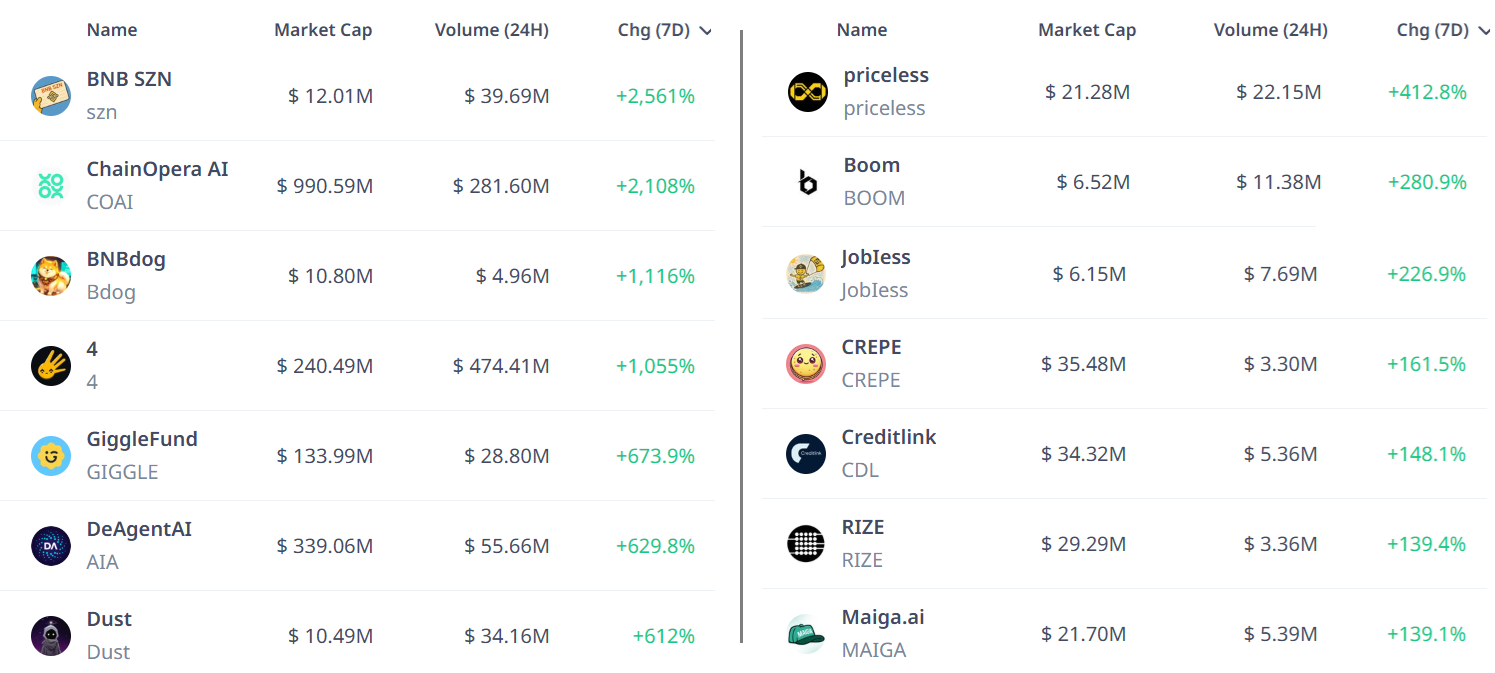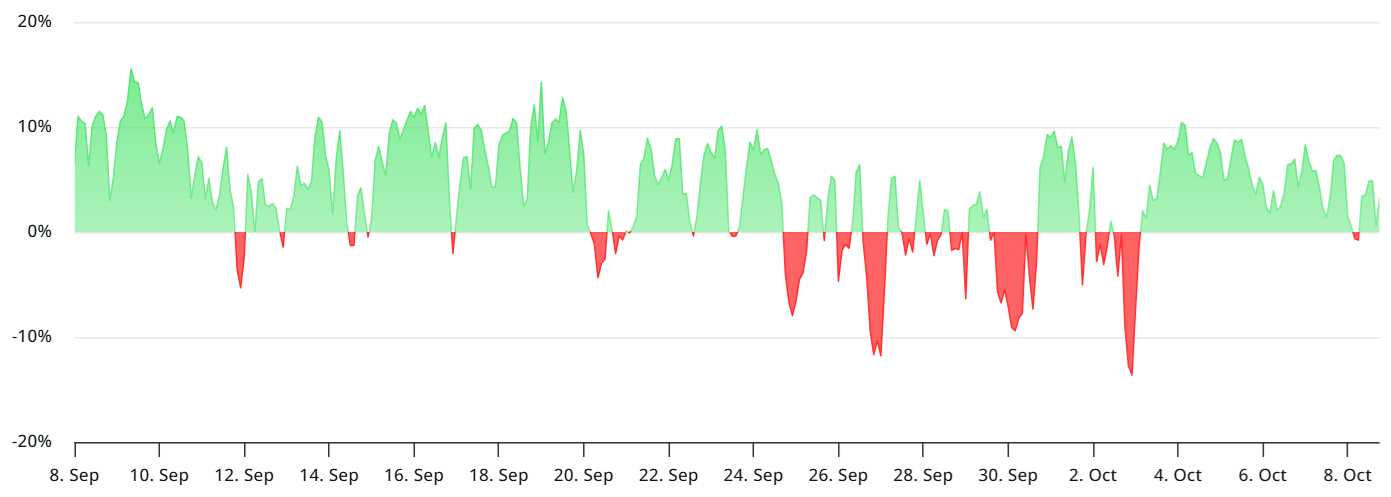
Upcoming Potential Rally for SOL Reaches $300: Key Factors Influencing Solana
Solana's price outlook strengthens with increases in total value locked, decentralized exchange activity, institutional interest, and expectations for spot ETF approvals.
Key Insights:
- Solana ETFs and ETPs garnered $706 million in weekly inflows, significantly more than $219 million for XRP, as revealed by CoinShares.
- Funding rates for SOL remain below 6%, indicating a lack of enthusiasm for leveraged bullish trades.
Solana’s native token, SOL, rebounded to $229 from a brief drop to $218 on Tuesday, positively responding to recent minutes from the US Federal Reserve’s September 17 meeting, which bolstered expectations of possible interest rate reductions in 2025.
Traders are hopeful that SOL might reach the $300 target, supported by robust bullish sentiment reflected in derivatives data and on-chain metrics.
 Blockchains ranked by 7-day fees. Source: Nansen
Blockchains ranked by 7-day fees. Source: Nansen
Solana has seen a 22% surge in seven-day network fees, driven by increased activity across decentralized exchanges (DEXs), while its main competitor, Ethereum, faced a 21% decrease in network revenue within the same timeframe. Solana currently leads in transaction count, outperforming the total of both Ethereum and its layer-2 solutions.
 Weekly Solana DEX volumes, USD. Source: DefiLlama
Weekly Solana DEX volumes, USD. Source: DefiLlama
DEX volume on Pump increased by 78% over the last week, with Meteora and Raydium also seeing impressive climbs of 73% and 46%, respectively. Over the last 30 days, Solana recorded a significant $129 billion in volume for decentralized exchanges, surpassing Ethereum’s $114 billion, according to DefiLlama data.
Enhanced Solana Network Metrics
Network fees are crucial for blockchains focusing on decentralized applications as revenues help mitigate inflationary pressures. Maintaining validators involves costs, and staking participants expect reasonable returns. Thus, insufficient network activity can disincentivize holding the native token and could lead to selling pressure.
Solana’s total value locked (TVL) grew 8% over the last 30 days, fueling further growth in network fees. Noteworthy increases included deposits in Kamino (20%), Drift (12%), and Orca (12%). In comparison, Ethereum’s TVL saw a mere 3% growth, while Tron deposits grew by 6%. Consequently, Solana solidifies its position as the second-largest network with $14.2 billion in TVL, representing 8% of the market.
The rapid rise in activity on the perpetual futures trading platform Aster redirected traders’ attention to BNB Chain, following a trail of memecoins that surged significantly. Despite SOL’s 3% price increase in that timeframe, BNB’s impressive 28% rally weighed on the mood among Solana ecosystem investors.
 Top 7-day performances of BNB Chain tokens. Source: Cryptorank.io
Top 7-day performances of BNB Chain tokens. Source: Cryptorank.io
Growing Institutional Demand for Solana
Usage data from SOL perpetual futures offers insights into whether traders are losing confidence after the attempted breach of $250 on September 18. Many SOL holders may feel discouraged, especially when other tokens have recently hit new all-time highs, such as BNB reaching $1,357 on Tuesday and Mantle (MNT) at $2.81 on Wednesday.
 SOL perpetual futures funding rate, annualized. Source: laevitas.ch
SOL perpetual futures funding rate, annualized. Source: laevitas.ch
Funding rates for SOL perpetual futures remain below the 6% neutral level, suggesting weak demand for bullish leveraged positions. Traders’ cautious perspectives may be linked to the increasing traction of competing blockchains, which have diverted attention from Solana despite impressive weekly inflows into its exchange-traded products.
CoinShares indicated that Solana ETFs and ETPs attracted $706 million in inflows during the week ending September 5, well beyond the $219 million that XRP instruments received. Investors foresee potential approval of multiple spot Solana ETFs by the SEC, expected on Friday, which could trigger more institutional inflows and potentially lift SOL’s price above $300.
This article is for informational purposes only and does not serve as legal or investment advice. The opinions expressed here are those of the individual authors and do not necessarily indicate the views of Cointelegraph.



